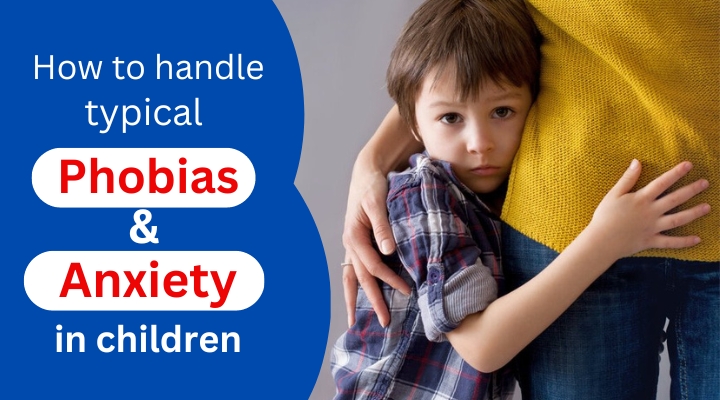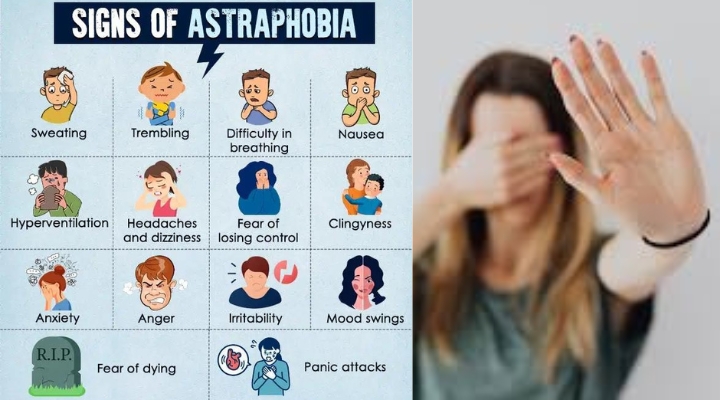How to handle typical Phobias and Anxiety in children
Childhood is a time of exploration, growth, and learning. However, it is not uncommon for children to develop fears and anxieties that can sometimes hinder their development. In this article, we’ll delve into various strategies, How to handle typical Phobias and Anxiety in children to help them in conquering their fears and manage anxiety effectively. Typical phobias and anxiety in children are natural responses to certain situations or objects, but when these fears become overwhelming and disrupt daily life, intervention and support are essential.
How to handle typical Phobias and Anxiety in children
Understanding Typical Phobias and Anxiety
Phobias and anxiety are a normal part of human existence, and children are no exception. Typical phobias in children often include fear of the dark, animals, insects, thunderstorms, medical procedures, or separation from caregivers. On the other hand, anxiety in children can manifest as general worry, excessive fear of failure, social anxiety, or performance anxiety. It’s important to differentiate between age-appropriate fears and anxiety disorders that may require professional intervention.
Related – How To Distinguish Between False Pain & True Labor Pain
Creating a Supportive Environment
1. Open Communication-
Establishing open lines of communication is the foundation for helping children deal with their fears and anxieties. Encourage your child to express their feelings without judgment. Let them know their emotions are valid and you are there to listen and support them.
2. Education and Empathy-
Educate yourself about the specific phobia or anxiety your child is facing. This knowledge will enable you to empathize with their struggles and provide informed support. Share age-appropriate information with your child, helping them understand their emotions better.
3. Provide Reassurance-
Reassure your child that their fears and anxieties are temporary and manageable. Offer consistent reassurance that you are there to guide them through challenging moments.
Empowering Strategies for Handling Phobias and Anxiety
- Education- Provide age-appropriate information about the fear-inducing object or situation. Knowledge can often dispel unfounded fears.
- Deep Breathing and Relaxation Techniques- Teach your child deep breathing exercises and relaxation techniques. These techniques can help reduce anxiety at the moment and build emotional resilience over time.
- Visualization- Encourage your child to imagine a safe and pleasant scenario when facing their fear. Visualization can help shift their focus from the fear itself.
- Storytelling- Create stories or narratives involving the feared object or situation, but with a positive and empowering outcome. This can help your child reframe their perception of the fear.
- Progressive Exposure- Gradually expose your child to the feared situation or object in small, manageable steps. Celebrate their progress and provide positive reinforcement.
- Create a Safety Zone- Establish a safe space where your child can retreat when overwhelmed. This space can be equipped with comfort items and soothing activities.
Involvement of Caregivers and Educators
1. Collaboration- Maintain open communication between parents, caregivers, and educators. Sharing insights about the child’s fears and progress can ensure consistency in their support network.
2. Classroom Strategies- Educators can play a crucial role in helping children manage anxiety. Providing a structured and predictable classroom environment, offering opportunities for social interactions, and implementing relaxation techniques can contribute to a more comfortable learning experience.
3. Peer Support- Encourage healthy social interactions with peers. Positive relationships can provide emotional support and create a sense of belonging, which can alleviate anxiety.
Recognizing When Professional Help is Needed
While many children can overcome typical phobias and anxiety with parental support and coping strategies, there are instances when professional help becomes necessary:
1. Persistent and Severe Symptoms-
If your child’s anxiety or phobia significantly impacts their daily life, disrupts their routines, or causes extreme distress, it’s advisable to consult a mental health professional.
Related- Labor Pain – Everything You Need To Know About Child Birth!
2. Physical Symptoms-
Professional intervention is recommended if anxiety leads to physical symptoms like frequent headaches, stomachaches, panic attacks, or difficulty sleeping.
3. Long Duration-
If the fears or anxiety persist for an extended period, professional guidance is essential to prevent long-term emotional difficulties.
Helping children conquer phobias and anxiety requires patience, understanding, and a multifaceted approach. By creating a supportive environment, using gradual exposure techniques, teaching coping strategies, seeking professional help when necessary, and involving schools and peers, parents and caregivers can empower children to face their fears and manage their anxieties effectively. Remember that each child is unique, and the strategies you choose should be tailored to their individual needs. With the right guidance and support, children can develop the skills and confidence needed to navigate life’s challenges with resilience and courage.
Frequently Asked Questions-
What are common signs of anxiety in children?
Children may exhibit various signs of anxiety, such as excessive worry, restlessness, irritability, difficulty concentrating, sleep disturbances, physical symptoms like stomachaches or headaches, and avoidance of certain situations. Recognizing these signs early can help parents intervene and provide appropriate support.
When should I seek professional help for my child’s phobias or anxiety?
If your child’s fears or anxiety significantly interfere with their daily life, relationships, or academic performance, it’s advisable to seek professional help. Consulting a child psychologist or therapist experienced in treating anxiety disorders can provide tailored strategies and interventions.
How can I help my child face their fears without overwhelming them?
Gradual exposure is critical. Start with small steps, gradually exposing them to the feared object or situation while offering reassurance and positive reinforcement. This approach helps them build confidence and reduces the intensity of their fear response over time.
Are there any effective relaxation techniques for children with anxiety?
Yes, several relaxation techniques can help children manage anxiety. Deep breathing exercises, progressive muscle relaxation, guided imagery, and mindfulness activities are particularly practical. These techniques can help children relax, reduce anxious thoughts, and promote a sense of calm.
Can phobias and anxiety in children be outgrown without treatment?
While some children may naturally outgrow certain fears, many benefit from supportive interventions. Untreated anxiety and phobias can persist into adulthood and significantly impact a child’s quality of life. Early intervention and effective strategies can empower children to manage their emotions and develop healthy coping mechanisms.










